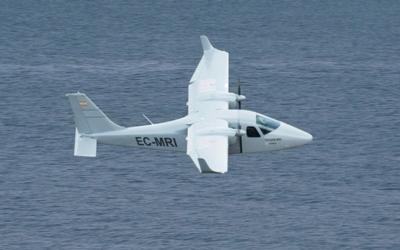Collaborative Effort With Tecnam, Selex Galileo, FLIR Systems,
And Airborne Technologies
A maritime surveillance light aircraft is in development through
a collaboration between Multinational IT company Indra, Italian
aircraft manufacturer Tecnam, firms SELEX Galileo, FLIR Systems and
Remote Sensing and Sensor Integration company Airborne
Technologies.

The five partners seek to develop an aircraft equipped to
provide state-of-the-art surveillance at a more competitive cost in
terms of acquisition and operation. The aircraft will be ready to
engage in rescue missions, protection of fishing fleets and
environment; and surveillance of illegal trafficking of either
people or drugs, among others. The aircraft will be ready to enter
service by the end of 2012.
This aircraft will patrol those maritime zones usually kept
under surveillance by coastguards with medium-size helicopters for
a considerably reduced cost and highly more efficient as it will be
equipped with a thorough maritime surveillance system (radar, AIS
vesseld ID system and a cutting-edge electroptical device).
The aircraft is based on the Tecnam's P2006T platform. This
light, twin-engine aircraft is easy to pilot and uses traditional
fuel which dramatically reduces costs in operation. It also
requires minimal maintenace and can takeoff and land in makeshift
runways. The aircraft will be able to patrol an area from 50 to 200
nautical miles offshore. This zone is out of the range of coastal
surveillance systems and medium-size helicopters which can make it
up to 100 miles. In order to cover this zone effectively the
required maritime patrol aircrafts can be acquired and operated at
a much higher cost.
The competitive cost of this new platform will permit the forces
in charge of coast surveillance and protection of the exclusive
economic zone to afford the necessary units to undertake their
duties in these waters. At the same time, by reducing operation
costs, the aircraft can patrol as many times as necessary.
The participation of Indra, SELEX Galileo, FLIR Systems and
Airborne Technologies contributes knowledge and experience to this
project to equip the aircraft with the necessary intelligence to
engage in maritime surveillance missions. The systems to be
implemented will allow the platform to explore areas of up to
40,000 nautical square miles each time.
Indra will undertake the implementation of the mission system,
the key element to control embarked sensors, integrate collected
data and present them to the operator. The mission system also
allows control of broad band bidirectional communications with the
ground station which receives and submits information in real time
as the information generated can be integrated and processed in any
existing coastal surveillance or maritime traffic control
systems.
The aircraft will be equipped with SELEX Galileo's Seaspray
5000E radar whose detail degree allows distinction of the shapes
and sizes of objects and is capable of detecting vessels or small
objects in the sea. It will also carry a state-of-the-art
electroptical camera of large format and high definition of FLIR
Systems. We should also add a vessel id system which captures the
automatic signals of ships. This identification signal emitted by
ships is compared with that supplied by the aircraft sensors, thus
facilitating surveillance and detection of suspicious actions.
 ANN's Daily Aero-Term (05.17.24): Very High Frequency
ANN's Daily Aero-Term (05.17.24): Very High Frequency ANN's Daily Aero-Linx (05.17.24)
ANN's Daily Aero-Linx (05.17.24) ANN FAQ: Submit a News Story!
ANN FAQ: Submit a News Story! Classic Aero-TV: ANN Visits Wings Over The Rockies Exploration Of Flight
Classic Aero-TV: ANN Visits Wings Over The Rockies Exploration Of Flight Airborne Affordable Flyers 05.16.24: PRA Runway, Wag-Aero Sold, Young Eagles
Airborne Affordable Flyers 05.16.24: PRA Runway, Wag-Aero Sold, Young Eagles



